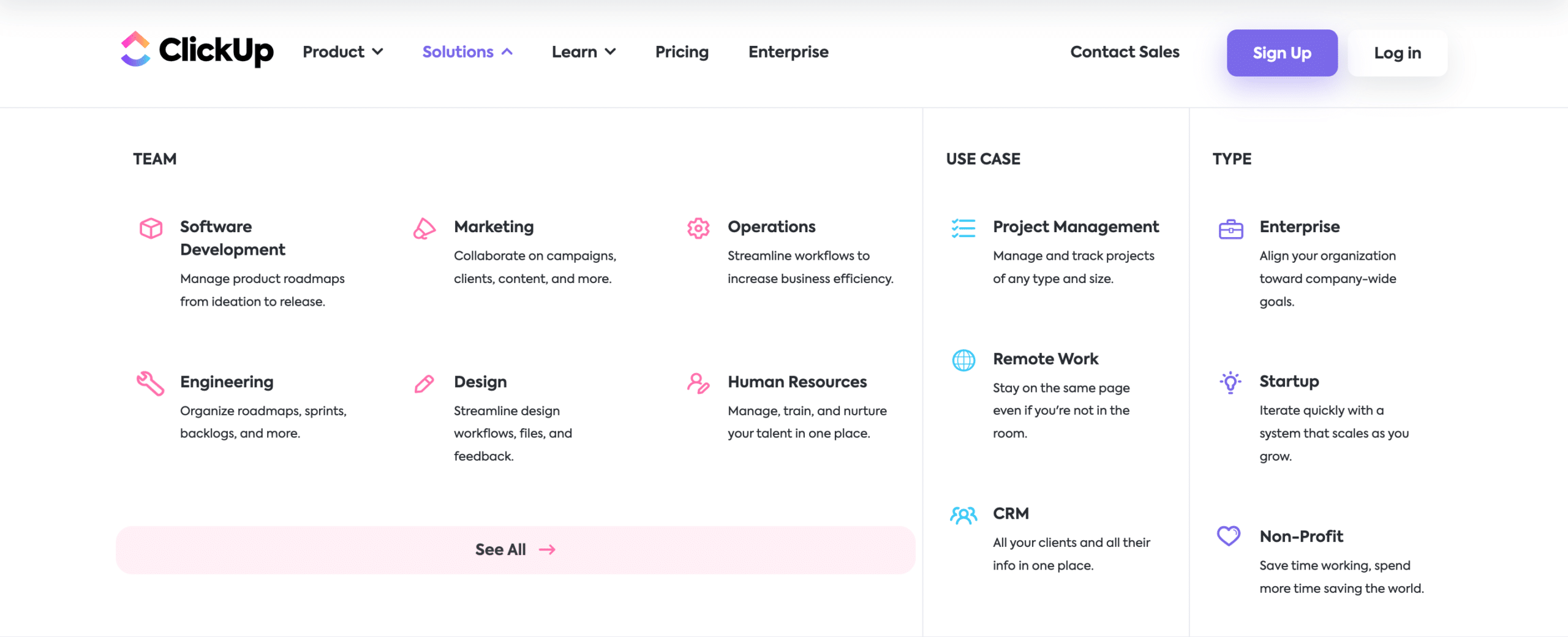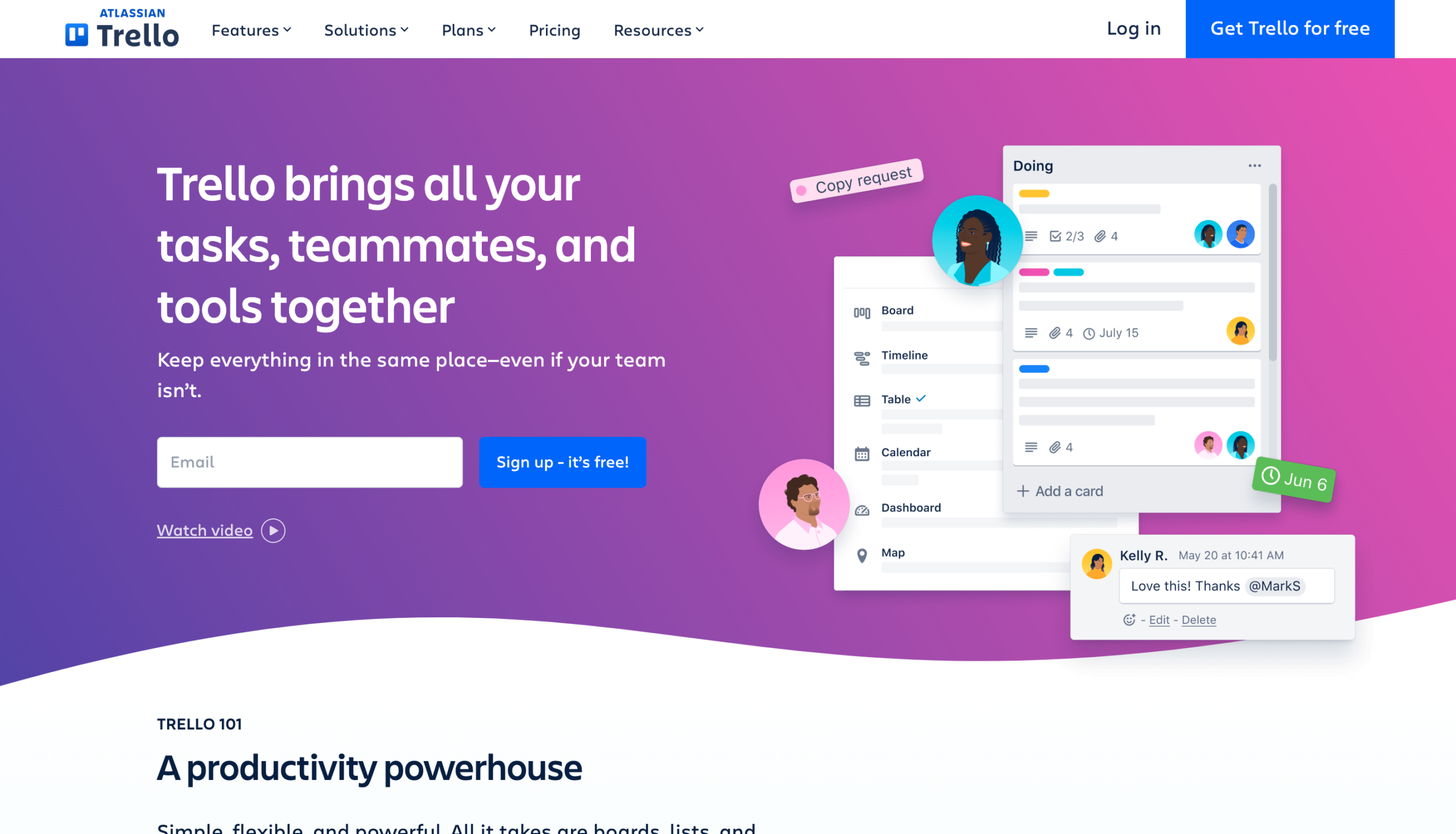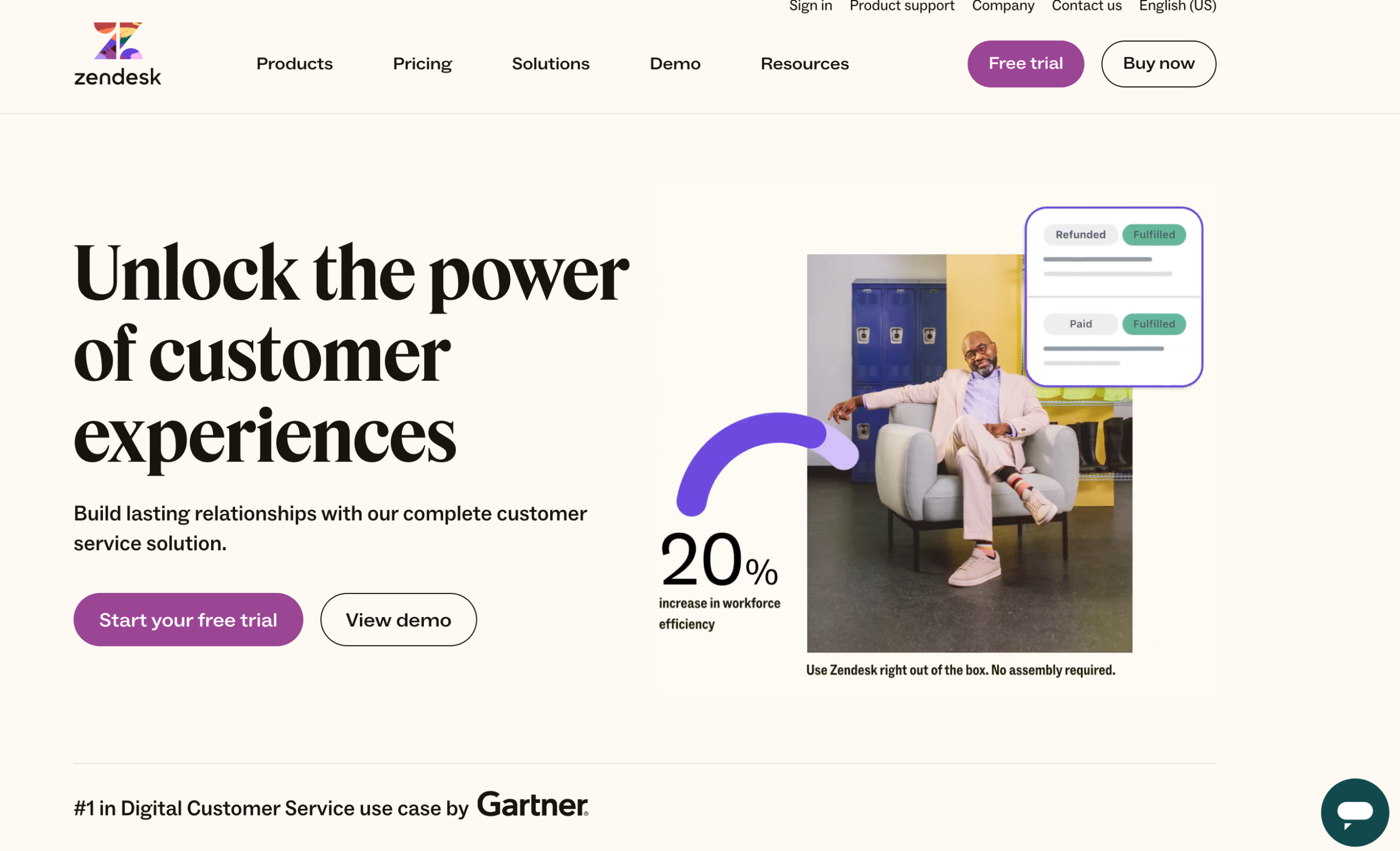Web development plays a crucial role in the success of enterprise tech companies. The quality and effectiveness of websites directly impact businesses as they increasingly rely on their online presence to connect with customers, generate leads, and drive revenue. A well-designed and user-friendly website not only attracts and engages visitors but also fosters trust, credibility, and brand loyalty.
With their complex products and services, enterprise tech companies often face unique challenges in web development. They need to showcase their technological expertise, communicate their value proposition, and provide a seamless user experience. A poorly developed website can result in lost opportunities, hindered growth, and damage to the company’s reputation. Therefore, investing in effective web development strategies is essential for enterprise tech companies to thrive in the competitive market.
Let’s jump into some tips and tricks for enterprise tech web development that will help you stay ahead of the competition and deliver outstanding online experiences to your target audience.
Understanding Your Audience
Identifying the target audience is a crucial first step in effective web development for enterprise tech companies. Understanding who the website is designed for helps in creating a tailored online experience that resonates with the intended users. By conducting thorough market research and analyzing the demographics, preferences, and behaviors of the target audience, companies can gain valuable insights into their needs and motivations.
If your website is for anyone and everyone, it won’t be effective in driving leads and revenue. You need to make sure you narrow your audience toward the specific niche your product/services are catered to.
Analyze Expectations & Needs
To create a successful website, it’s essential to delve deeper into the expectations and needs of the target audience. This involves conducting user surveys, interviews, and usability tests to gather feedback directly from the users. By understanding their pain points, goals, and desires, enterprise tech companies can align their web development strategies to address these specific needs effectively. This analysis enables the development team to make informed decisions about design elements, content, functionality, and overall user experience.
The possibilities are endless for what type of survey questions you can ask your audience. Depending on what answers you’re looking for, you’ll want to utilize certain styles to make the process straightforward for whoever is taking the survey. You can include multiple-choice, rating scales, open-ended questions, and even more. You have to ask yourself, what is the main goal of your survey?
Tailor Your Web Development Strategy
Once the target audience’s expectations and needs have been identified, it’s crucial to tailor web development strategies accordingly. This involves creating user personas or profiles that represent the characteristics and preferences of the target audience segments. With these personas in mind, the development team can design intuitive user interfaces, develop content that speaks to the audience’s language, and incorporate features and functionalities that align with their preferences.
Personalization has become increasingly important in web development. According to McKinsey, companies that grow faster drive 40% more of their revenue from personalization than their slower-growing counterparts. By utilizing data analytics and tracking user behavior, enterprise tech companies can offer personalized experiences that cater to individual users’ specific interests and needs. This can include personalized product recommendations, targeted messaging, and customized user journeys.
By taking a user-centric approach and tailoring web design strategies to meet the audience’s requirements, SaaS enterprise tech businesses can create websites that engage users, fulfill their needs, and ultimately drive conversions. Understanding the market is the foundation for building a successful website that establishes a strong connection with users and fosters long-term relationships.
User-Centric Design
User-centric design is vital in enterprise web development because it puts the needs, preferences, and goals of users at the forefront of the design process. By prioritizing the user experience, enterprise SaaS companies can create websites that are intuitive, engaging, and effective in achieving their business objectives. This approach ensures that the website aligns with user expectations, enhances usability, and fosters positive interactions, ultimately leading to increased user satisfaction and higher conversion rates.
Design Intuitive User Interfaces (UI) & User Experiences (UX)
Creating intuitive user interfaces (UI) and user experiences (UX) is at the core of user-centric design. The UI encompasses the visual elements and interactive components of the website, while the UX focuses on the overall experience users have while interacting with the site. Enterprise tech companies should strive to design clean, visually appealing interfaces that are easy to navigate and understand. This involves organizing information effectively, utilizing clear navigation menus, and providing intuitive controls and interactive elements. The goal is to ensure that users can easily find what they need, accomplish tasks efficiently, and enjoy a seamless and satisfying browsing experience. ClickUp is an enterprise project management software and they take a clean and sleek approach to organizing their solutions on their website in an effort to not overwhelm the visitor:

Implement Responsive Design for Optimal Cross-Platform Performance
In today’s multi-device world, responsive design is necessary for enterprise web development. In fact, 73.1% of web designers believe that a non-responsive design is the top reason why visitors leave a website. Responsive design ensures that websites adapt and display properly across a wide range of devices and screen sizes, including desktops, laptops, tablets, and smartphones. With more users accessing websites from mobile devices, it is crucial to provide a consistent and optimized experience across all platforms.
Trello is a perfect example of responsive design. Their website looks great on any device and it’s simple yet eye-catching:

Implementing responsive design principles, such as flexible layouts, fluid images, and adaptive navigation, ensures that users can access and interact with the website effortlessly, regardless of the device they use. This enhances user satisfaction, reduces bounce rates, and improves overall engagement. Putting users at the center of the design process leads to websites that not only meet user expectations but also align with business objectives, fostering success in the digital landscape.
Design With The Target Audience in Mind
You want to ensure that your enterprise SaaS web design is catered toward the audience that will be most interested in your product. Why should they choose you over other competitors? You want to express how you stand out from other software solutions. Zendesk does a great job of this by keeping statistics subtle but also clear to the visitor that they are a trusted brand:

Notice the statistics “20% increase in workforce efficiency” and “#1 in Digital Customer Services use case by Gartner”.
TL;DR? Watch a Short Recap Here:
Performance Optimization
In the fast-paced online world, website speed and performance are paramount for enterprise tech companies. Slow-loading websites lead to a $2.6 billion revenue loss each year. Users expect websites to load quickly and deliver a seamless browsing experience. Slow-loading websites can lead to frustrated users, increased bounce rates, and lost business opportunities. Potential customers are likely to bounce if your website doesn’t load in under 3 seconds. Therefore, it is crucial to prioritize performance optimization to ensure a smooth and engaging user experience.
Minimize File Sizes & Optimizing Code
One of the key strategies for performance optimization is minimizing file sizes and optimizing code. Compressing images, scripts, and other media files reduce their size without compromising quality. Optimizing code involves streamlining and refactoring the codebase to eliminate unnecessary elements, improve efficiency, and reduce load times. By minimizing file sizes and optimizing code, enterprise tech companies can significantly improve website loading speed and overall performance. This is a simple yet vital part of maximizing your website for optimal performance.
Utilize Caching Mechanisms and Content Delivery Networks (CDNs)
Caching mechanisms and content delivery networks (CDNs) are powerful tools to boost website performance. Caching involves temporarily storing frequently accessed data, such as HTML pages, images, and scripts, to reduce server load and response times. CDNs distribute website content across multiple servers worldwide, delivering it from the server closest to the user’s location. This reduces latency and improves loading speeds, especially for users geographically distant from the server. By leveraging caching mechanisms and CDNs, enterprise tech companies can provide faster and more reliable access to their website, irrespective of user location.
Monitor & Analyze Performance Metrics to Identify Bottlenecks
Continuous monitoring and analysis of performance metrics are essential for identifying bottlenecks and areas for improvement. Through tools like Google Analytics, website administrators can track metrics such as page load times, server response times, and user engagement. These metrics provide valuable insights into the website’s performance and user behavior, enabling companies to identify performance issues and take proactive measures to address them. By monitoring and analyzing performance metrics, enterprise tech businesses can make data-driven optimizations and fine-tune their website for optimal speed and performance.
Overall, A fast and high-performing website not only enhances user satisfaction but improves search engine rankings, increases conversions, and ultimately contributes to the overall success of the enterprise tech company.
Before you continue reading…
You can also explore our Brand Positioning Audit Guide.
There are two things required to reach a destination – first to know where you want to go, but second to also know where you stand today. It’s true, if we asked Google maps to direct us to Pittsburgh, but it had no idea where we were then it could not show us the path we need to take.
Security Measures
Web security is of utmost importance for enterprise tech as companies in this industry handle sensitive data, interact with customers’ personal information, and provide critical services. A breach in web security can lead to severe consequences such as data theft, financial loss, damage to reputation, and legal liabilities. According to the 2022 Cost of Data Breach Study conducted by IBM, the average cost of a data breach for a company reached $4.24 million. Recognizing the significance of web security is essential for enterprise tech companies to safeguard their assets, protect customer trust, and maintain regulatory compliance.
Implement Secure Coding Practices & Frameworks
Implementing secure coding practices and frameworks is a fundamental step in web security. Enterprise tech companies should adhere to industry-standard guidelines, such as OWASP (Open Web Application Security Project), to ensure secure coding practices. This involves validating and sanitizing user input, implementing proper authentication and access controls, and using encryption for sensitive data transmission. By adopting secure coding practices and utilizing robust frameworks, enterprise tech companies can significantly mitigate the risk of common security vulnerabilities and protect against attacks such as SQL injection, cross-site scripting (XSS), and cross-site request forgery (CSRF).
Regularly Update Software & Patching Vulnerabilities
Enterprise tech businesses must prioritize regular software updates and patching vulnerabilities to stay ahead of potential security threats. This includes keeping all software components, frameworks, and content management systems up to date. Developers should regularly monitor security advisories and apply patches promptly to address any identified vulnerabilities. By staying current with software updates and patches, enterprise tech companies can fortify their web applications against known security vulnerabilities and ensure a more secure online environment.
Conduct Thorough Security Audits & Penetration Testing
Thorough security audits and penetration testing are essential for identifying and addressing potential security weaknesses in web applications. Security audits involve evaluating the website’s infrastructure, architecture, and codebase to identify any vulnerabilities or areas of concern. Penetration testing, on the other hand, involves simulating real-world attacks to uncover potential weaknesses that could be exploited by malicious actors. By conducting regular security audits and penetration tests, enterprise tech companies can proactively identify and rectify security flaws, ensuring that their web applications are resilient to potential threats.
In addition to audits and penetration tests, it is essential to establish robust monitoring and incident response mechanisms. Intrusion detection systems, log analysis, and security information and event management (SIEM) tools can help detect and respond to security incidents promptly. By continuously monitoring and addressing security threats, enterprise tech companies can mitigate risks and minimize the impact of potential breaches. This also builds customer trust since you’re committed to ensuring that their data is protected and secure no matter what.
Scalability & Flexibility
For enterprise tech companies, designing websites that can handle enterprise-level traffic and accommodate future growth is essential. Websites should be built with scalability in mind, ensuring they can handle increasing user demands without compromising performance. This involves optimizing server configurations, utilizing caching mechanisms, and implementing load-balancing techniques to distribute traffic efficiently. By designing websites to handle enterprise-level traffic and growth, companies can ensure a seamless user experience and prevent any downtime or performance issues during peak usage periods.
Utilize Scalable Architectures & Cloud-Based Solutions
Cloud computing provides on-demand access to computing resources, allowing SaaS companies to scale their website infrastructure dynamically. By utilizing scalable architectures, such as microservices or serverless architecture, businesses can break down their applications into smaller, modular components that can be independently scaled. Cloud-based solutions, such as auto-scaling and elastic load balancing, further enable companies to adapt their infrastructure based on demand. This scalability empowers enterprise tech companies to handle sudden traffic spikes, accommodate growth, and maintain optimal performance levels.
Implement Modular & Extensible Code Structures
To facilitate scalability and flexibility, enterprise tech companies should implement modular and extensible code structures. This involves breaking down the codebase into smaller, reusable modules or components. By adopting modular development practices, developers can easily add new features, modify existing functionalities, and scale specific components without affecting the entire application. This approach streamlines development efforts, enhances code maintainability, and enables efficient collaboration among development teams. By implementing modular and extensible code structures, enterprise tech companies can quickly adapt their websites to meet evolving business needs and scale with minimal disruption. You want to ensure that your website won’t get bogged down by extensive use of coding. This is the perfect way to minimize that risk.
Ensure Flexibility to Accommodate Future Enhancements & Integrations
Building flexibility into the website architecture is crucial for accommodating future enhancements and integrations. Enterprise tech companies should design their websites with extensibility in mind, allowing for the seamless integration of new technologies, features, and third-party services. Using robust APIs (Application Programming Interfaces) and following standards-based development practices facilitate smooth integration with external systems. By ensuring flexibility, enterprise SaaS and tech businesses can easily adapt their websites to incorporate new functionalities, integrate with emerging technologies, and stay ahead of industry trends, without the need for major reengineering efforts.
By prioritizing scalability and flexibility in web development, enterprise tech companies can future-proof their websites, ensuring they can handle increasing traffic, accommodate growth, and adapt to changing business requirements.
Collaboration & Version Control
Promoting effective collaboration within web development teams is crucial for successful outcomes. Clear communication channels and collaboration tools should be established to facilitate seamless collaboration among team members. Utilizing project management platforms, instant messaging tools, and video conferencing software enables effective communication, enhances transparency, and fosters collaboration within the team. Regular team meetings, stand-ups, and feedback sessions help align team members’ efforts, promote knowledge sharing, and ensure everyone is working towards a common goal. This is especially important for enterprise tech since it’s catering more toward large-scale companies/customers.
Utilize Version Control Systems For Seamless Code Management
Version control systems, such as Git, play a vital role in ensuring seamless code management and collaborative development. Version control systems allow developers to track changes, manage different code versions, and merge code contributions from multiple team members effectively. By utilizing branching and merging techniques, developers can work on features and bug fixes simultaneously without conflicts. These systems provide a centralized repository where developers can access, review, and revert code changes as needed. This fosters collaboration, minimizes the risk of code conflicts, and provides a reliable source of truth for the project’s codebase.
Establish Clear Workflows & Documentation Processes
Establishing clear workflows and documentation processes is essential for efficient collaboration within web development teams. Clear guidelines and best practices should be defined to ensure consistency in code quality and development practices. This includes establishing coding standards, documentation templates, and guidelines for code reviews and testing. By documenting processes and maintaining a central knowledge base, team members can easily access relevant information, troubleshoot issues, and onboard new developers effectively. Clear workflows and documentation processes streamline collaboration, improve productivity, and ensure the project’s long-term maintainability.
Conduct Regular Code Reviews & Maintain a Clean Codebase
Code reviews involve web development peers reviewing each other’s code for quality, readability, and adherence to coding standards. By conducting code reviews, potential issues and bugs can be identified early, ensuring the development of high-quality code. It also promotes knowledge sharing and helps team members learn from one another. Additionally, ongoing efforts should be made to refactor and optimize the codebase, eliminating unnecessary complexity and improving its readability and maintainability. A clean codebase leads to improved collaboration, easier debugging, and faster development cycles. Similar to a lot of other processes, it’s never a bad idea to get a second set of eyes on a project. Someone else you work with may notice something that you may not have caught.
Version control systems and clear processes streamline development workflows, enhance code management, and facilitate seamless collaboration. Regular code reviews and maintaining a clean codebase promote code quality, reduce technical debt, and contribute to the long-term success of web development projects.
Testing & Quality Assurance
Rigorous testing and quality assurance (QA) practices are crucial for ensuring the reliability, functionality, and user satisfaction of enterprise tech companies websites. Testing and QA help identify and rectify issues before they reach the end users. As a result, this ensures that you’re providing a high-quality product. By prioritizing testing and QA, companies can reduce the risk of critical bugs, improve overall system stability, and deliver a seamless user experience.
Implement Automated Testing Frameworks & Tools
Automated testing frameworks, such as Selenium or Cypress, enable the creation of automated test scripts that simulate user interactions and validate expected outcomes. These frameworks provide capabilities for regression testing, functional testing, and performance testing, among others. By automating repetitive test scenarios, SaaS enterprise businesses can save time, increase test coverage, and detect potential issues early in the development cycle.
Conduct Usability Tests & Bug Tracking
By conducting usability tests, companies can gather valuable feedback from representative users and identify areas for improvement. Usability testing involves observing users interacting with the website and collecting qualitative and quantitative data on their experiences. Additionally, robust bug-tracking systems, such as JIRA or Bugzilla, facilitate efficient tracking, reporting, and resolution of identified issues.
Prioritize Accessibility & Compatibility Testing
Accessibility and compatibility testing is essential to ensure that websites are inclusive and work seamlessly across different devices, browsers, and assistive technologies. Accessibility testing involves evaluating the website’s compliance with accessibility standards and guidelines, such as the Web Content Accessibility Guidelines (WCAG). This ensures that individuals with disabilities can access and interact with the website effectively. Compatibility testing ensures that the website functions correctly on various platforms, browsers, and devices, providing a consistent experience for all users. Through this process, enterprise tech businesses can reach a broader audience, comply with accessibility regulations, and deliver a positive user experience regardless of the user’s device or assistive technology.
SEO & Analytics
Enhancing visibility and driving organic traffic to SaaS enterprise websites is crucial for their online success. Search engine optimization (SEO) techniques play a pivotal role in improving search engine rankings and increasing website visibility. By implementing SEO best practices, such as optimizing meta tags, improving website load speed, creating high-quality content, and acquiring authoritative backlinks, enterprise tech companies can boost their search engine rankings and attract more organic traffic. An effective SEO strategy ensures that the website is easily discoverable by search engines, leading to increased visibility and exposure to potential customers.
Additionally, you want to stay away from SEO bad practices. The main approach you should avoid is keyword stuffing. Your website will perform poorly if you try and fit your target search term wherever you can. It sounds like a good idea theoretically, but in reality, it does more harm than good. Your key search term should be evenly dispersed throughout your content where it’s relevant and not repetitive.
Conduct Keyword Research & Optimizing Content
Keyword research is an essential aspect of SEO and content management. This process involves identifying the keywords and phrases that potential customers use to find relevant products or services. By conducting thorough keyword research, enterprise companies can understand the search intent of their target audience and optimize their website content accordingly.
It is key to Incorporate relevant keywords in page titles, headings, meta descriptions, and throughout the website’s content to help search engines understand the website’s relevance to specific queries. Strategic placement of keywords and the creation of informative, valuable content not only improves search engine rankings but also enhances the UX and establishes the company’s expertise in the industry.
Integrate Analytics Tools for Data-Driven Decision-Making
By implementing analytics tracking codes, you can gather data on your SaaS enterprise website traffic, user demographics, page views, conversion funnels, and other relevant metrics. This data helps companies understand how users interact with the website, identify areas for improvement, and make informed decisions to enhance the website’s performance and user experience. Analytics integration empowers enterprise tech companies to optimize their web development efforts based on actual user data, leading to more effective outcomes.
Track Key Performance Indicators (KPIs)
KPIs can include metrics such as organic traffic, conversion rates, bounce rates, average session duration, and goal completions. By regularly monitoring KPIs, your tech enterprise business can evaluate the effectiveness of your SEO strategies, identify areas that require attention, and prioritize improvements. For example, if the bounce rate is high on specific pages, it may indicate a need to enhance the page’s content or visual design. By using data to drive decision-making, you can optimize your SaaS enterprise website for better performance, increased organic traffic, and improved conversion rates.
SEO optimization ensures that the website ranks higher in search engine results, leading to increased exposure and potential customer engagement. In tandem with that content creation tactic, the integration of analytics tools provides even more valuable insights into user behavior. This enables SaaS and tech companies to refine their strategies and create better user experiences.
Key Takeaways on Enterprise Web Development
Web development is a dynamic field that constantly evolves with new technologies, trends, and user expectations. It is crucial for SaaS enterprise tech businesses to emphasize the importance of continuous improvement and staying updated with the latest industry advancements. By adopting a growth mindset and actively seeking opportunities for learning and development, companies can ensure that their web development practices remain relevant and effective. Continuous improvement enables companies to stay ahead of the competition, deliver exceptional user experiences, and meet the changing needs of their target audience.
By implementing these web design best practices, companies can create websites that not only meet user expectations but also deliver optimal performance, security, and usability. Insivia’s team of developers can help your SaaS enterprise business gain a competitive edge with a user-centric design and responsive web platform. Our goal is to take away the hassle of navigating the ever-changing web development landscape and position you for long-term success.
